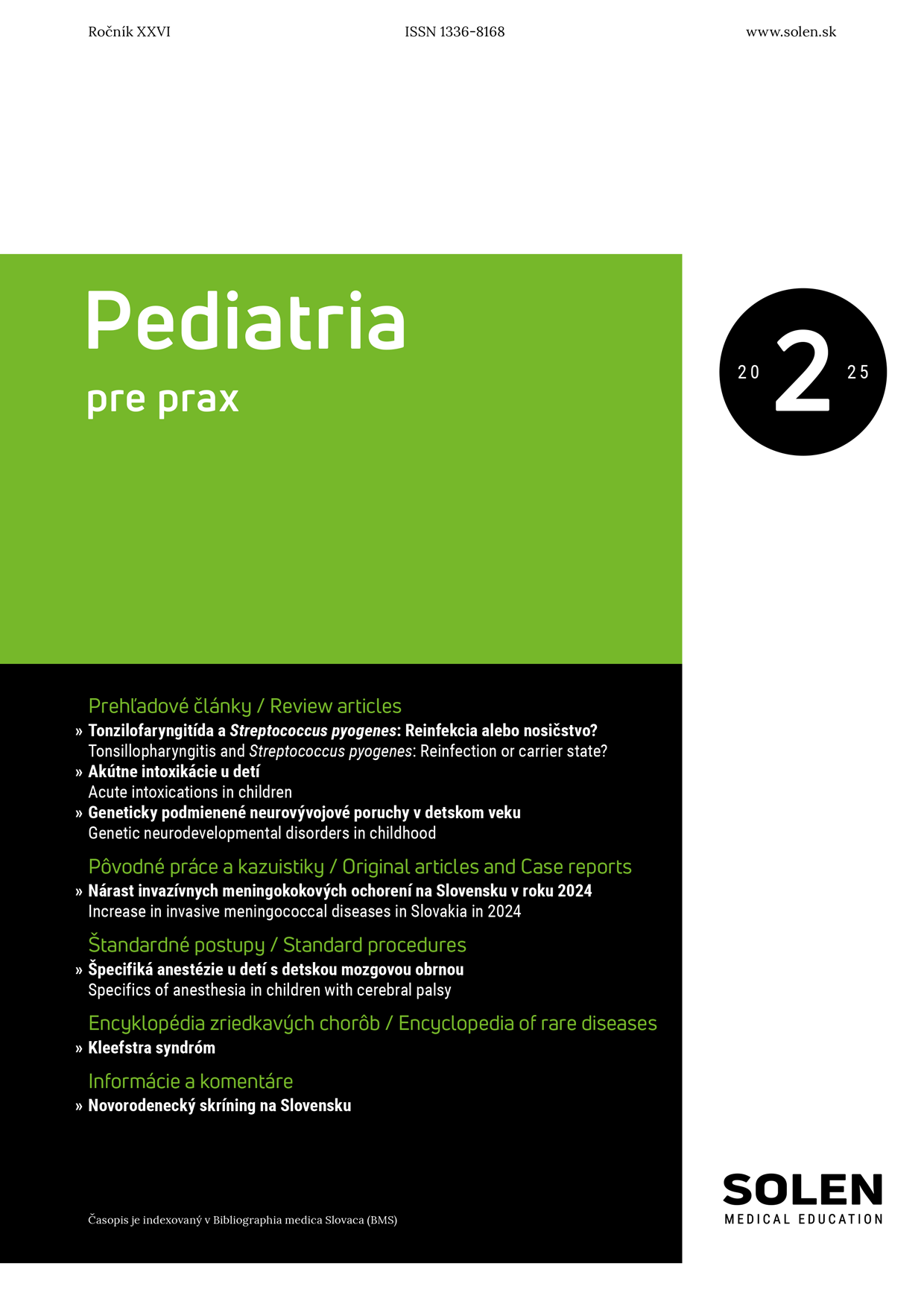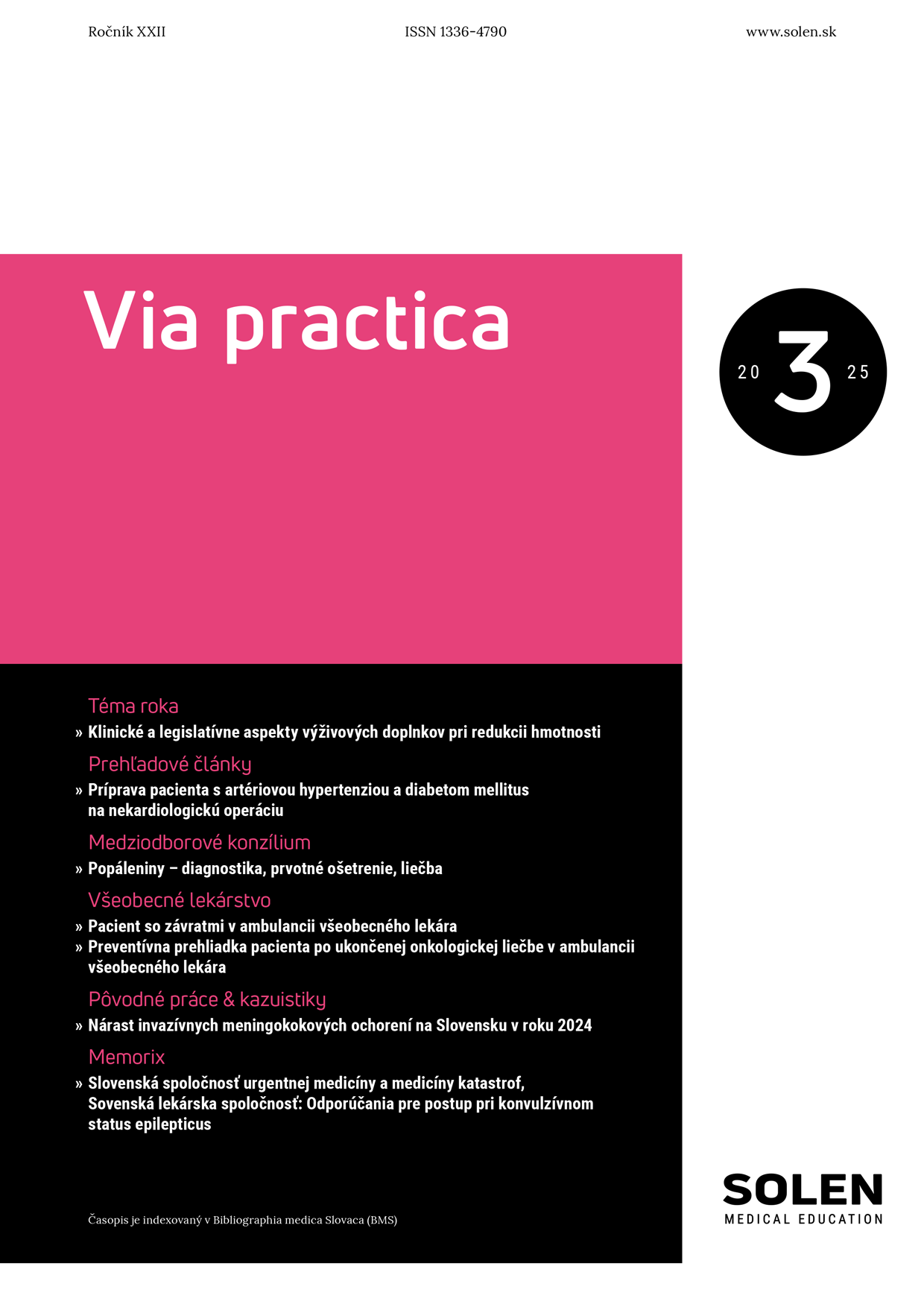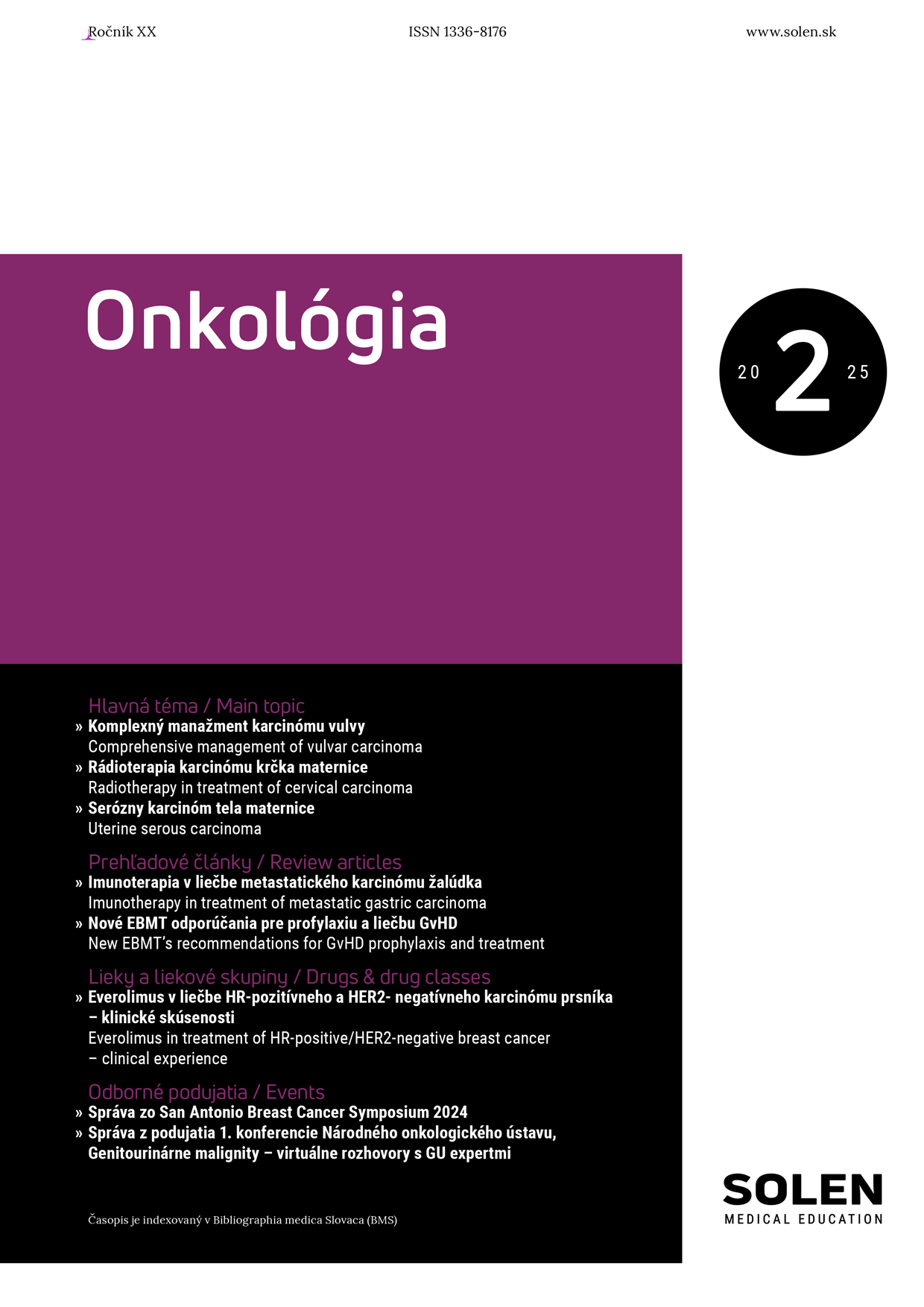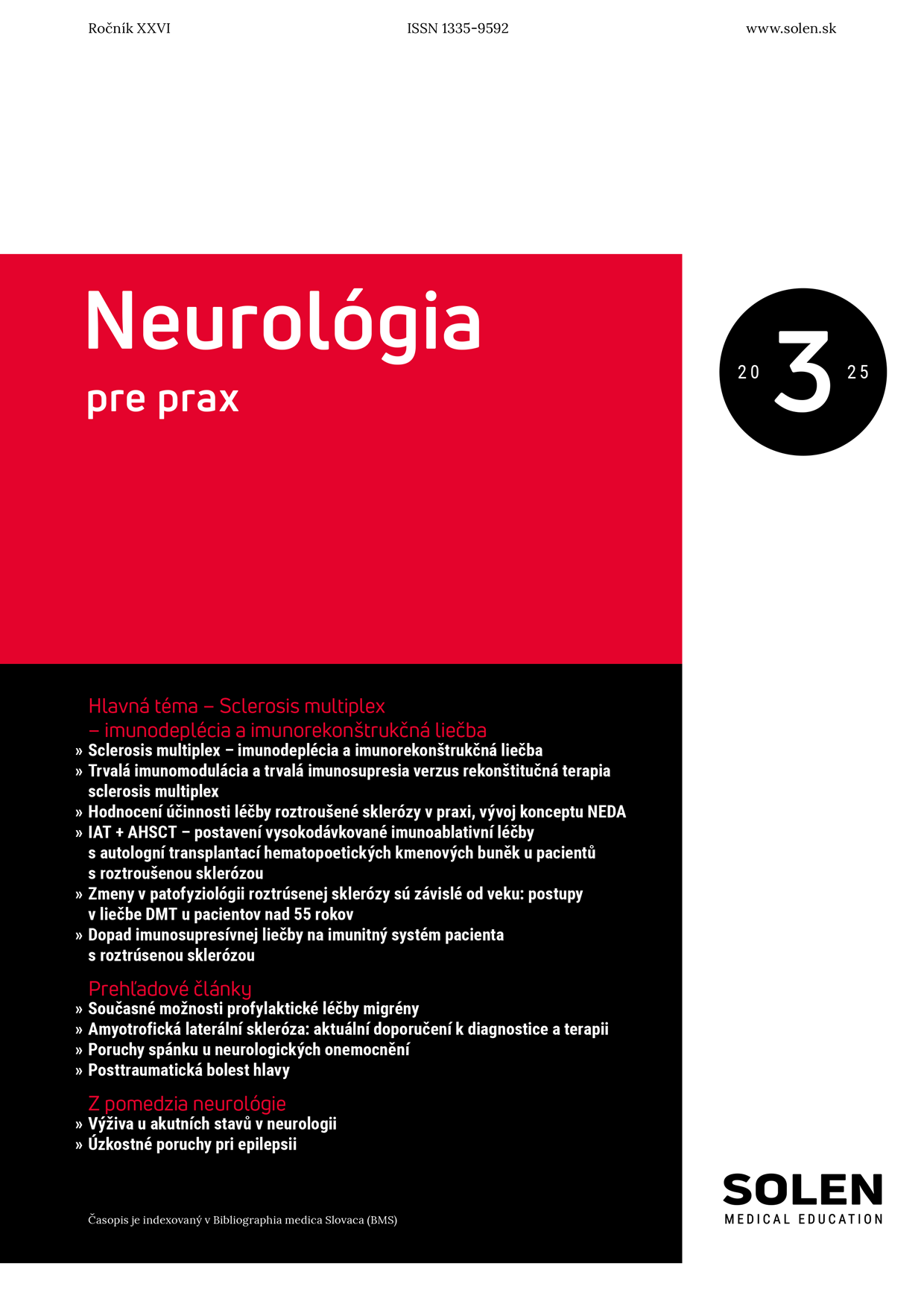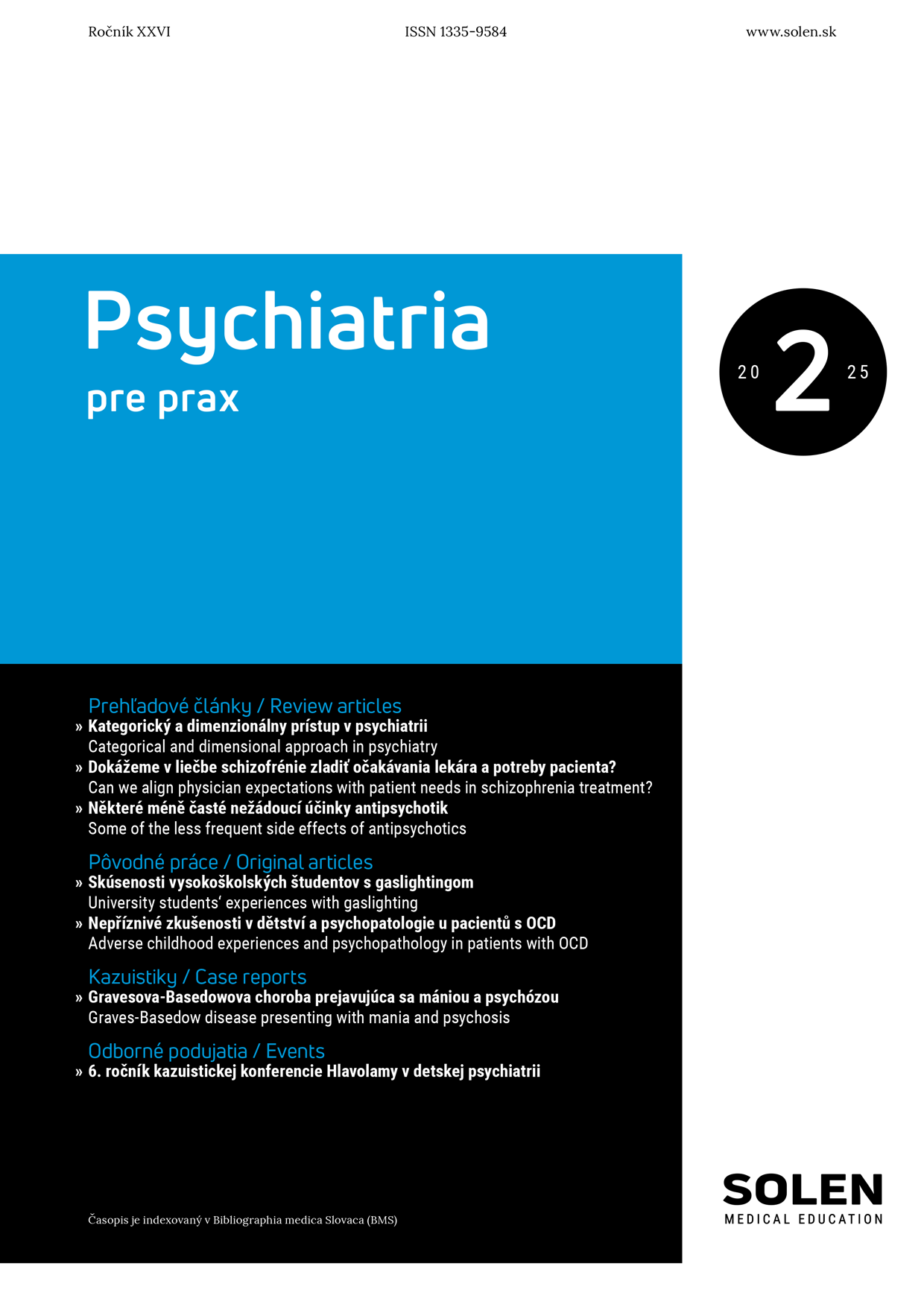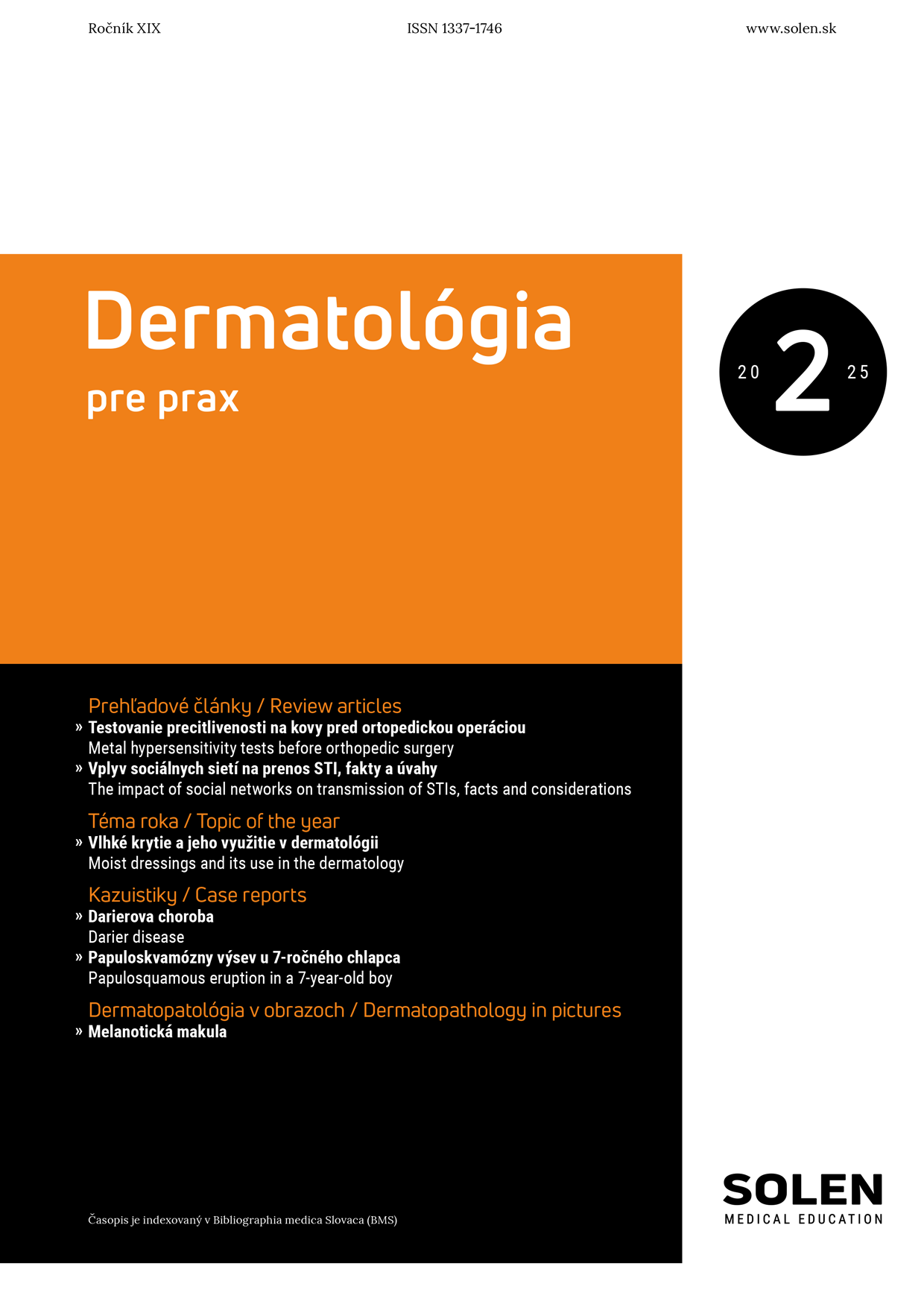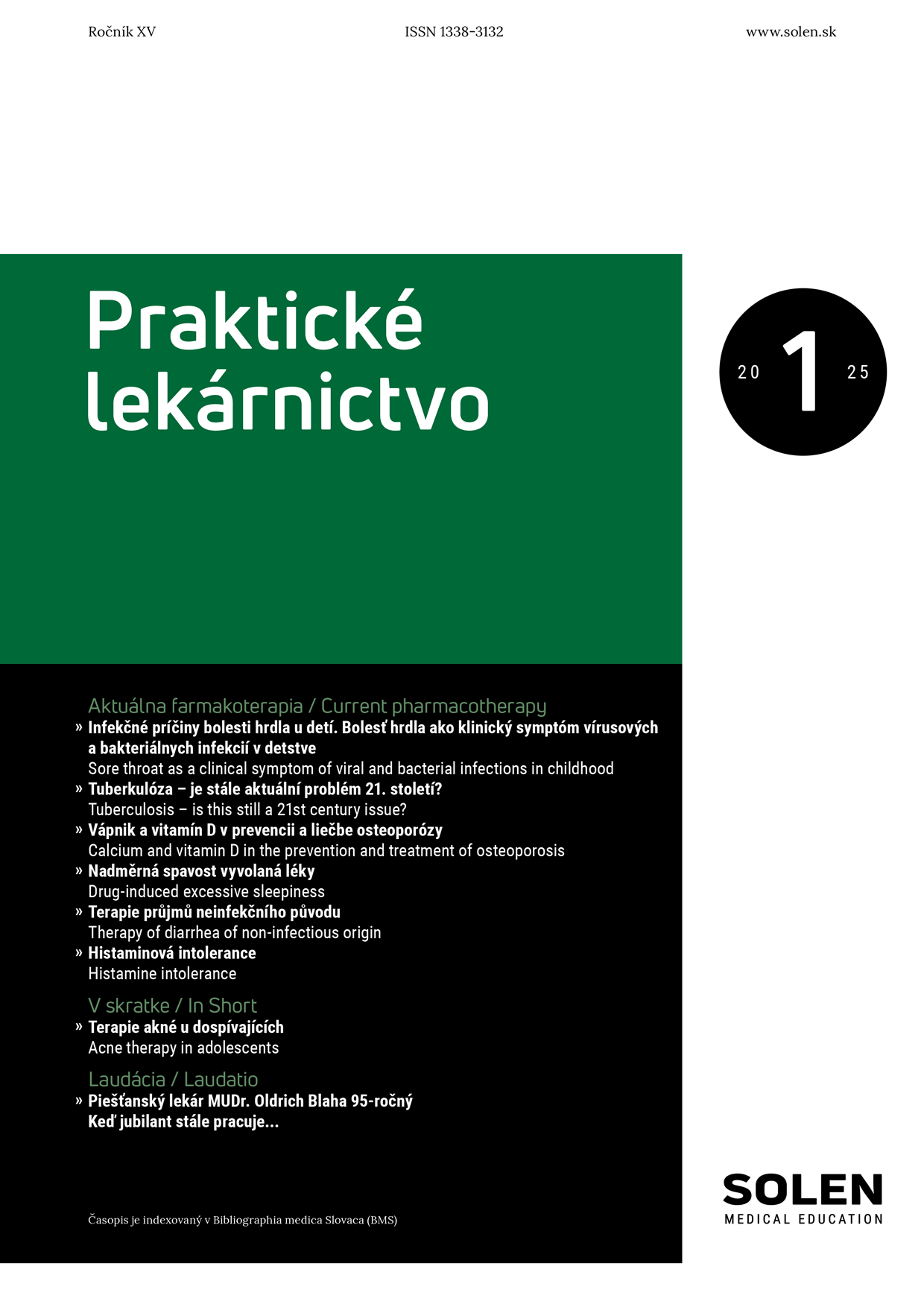Onkológia 5/2014
Nemalobunkový pľúcny karcinóm a možnosti liečby po neúspechu inhibítorov tyrozínkinázy v prvej línii
Úvod: Pokročilý nemalobunkový karcinóm pľúc s prítomnou senzitizujúcou mutáciou receptora epidermálneho rastového faktora (EGFR) štandardne liečime v 1. línii inhibítormi tyrozínkinázy (TKI). Po istom čase liečby vznikne rezistencia na TKI, ochorenie progreduje. Rozlišujeme primárnu a sekundárnu rezistenciu. Najlepšia liečba po zlyhaní TKI nie je jednoznačne dokázaná. Zvyčajne sa používa štandardná chemoterapia, v ďalšej línii je eventuálne možné skúsiť iný TKI. Kazuistika: Autor prezentuje kazuistiku 60-ročnej pacientky s pľúcnym adenokarcinómom s EGFR mutáciou, u ktorej bola pozorovaná primárna rezistencia na liečbu TKI. Pri progresii ochorenia bola použitá chemoterapia, plánovaná liečba afatinibom nebola pre zhoršenie stavu pacientky uskutočnená. Záver: Prezentovaný prípad EGFR mutovanej pacientky predstavuje príklad nie veľmi častej primárnej rezistencie na TKI. Mechanizmy primárnej rezistencie nie sú veľmi známe. Liečba po zlyhaní TKI v 1. línii u pacientov s nemalobunkovým karcinómom pľúc s EGFR mutáciou predstavuje výzvu pre medicínsky výskum.
Kľúčové slová: nemalobunkový karcinóm pľúc, mutácia receptora epidermálneho rastového faktora, primárna rezistencia na TKI, sekundárna rezistencia na TKI.
Non small-cell lung cancer and treatment options after tyrosine kinase inhibitors failure in the first line
Introduction: Advanced non-small cell lung cancer with present epidermal growth factor receptor (EGFR) sensitising mutation is standardly treated with tyrosine kinase inhibitors (TKI). During treatment a resistance to TKI develops, disease progresses. We differ primary and secondary resistance. The most effective treatment after TKI failure is not definitively proven. Standard chemotherapy is usually introduced, eventually it is possible to use other TKI in the next lines. Case: The author presents a case of 60-year old patient with lung adenocarcinoma with EGFR sensitising mutation, where primary resistance to TKI was observed. Chemotherapy after progression was introduced. Planned therapy with afatnib was not carried out due to deterioration of patient´s condition. Conclusion: Presented case of EGFR mutation-positive patient represents an example of not very frequent primary resistance to TKI. Mechanisms of primary resistance are not well understood. Treatment after first line TKI failure in non-small cell lung cancer with EGFR mutation represents a challenge for medical research.
Keywords: non-small cell lung cancer, epidermal growth factor receptor mutation, primary resistance to TKI, secondary resistance to TKI.


